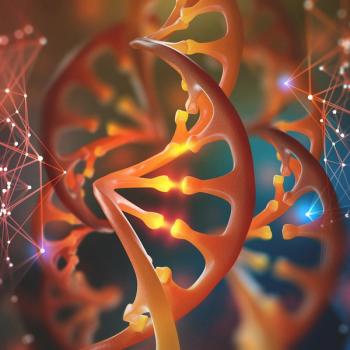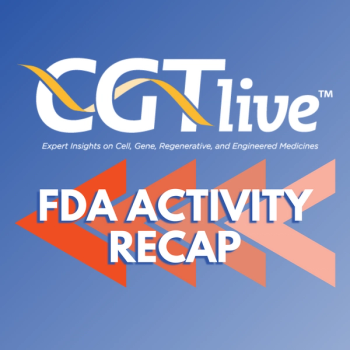
Capsida Biotherapeutics' CAP-003 Displays Properties of Disease-Modification in Preclinical Parkinson Disease Research
The noninvasive gene therapy exceeded the 30% efficacy threshold for normalizing GCase activity across all doses.
This article originally appeared on our sister site, NeurologyLive®.
Capsida Therapeutics' CAP-003, an intravenously (IV) delivered gene therapy intended to treat Parkinson disease associated with GBA mutations (PD-GBA), produced a brainwide RNA expression in nonhuman primates (NHPs) that was more than 200-fold greater than IV administered adeno-associated virus serotype 9 (AAV9) along with substantial increases in GCase protein and enzyme activity compared with untreated NHPs.1 The data were presented in a late-breaking poster presented at the Society for Neuroscience annual meeting, held October 5-9, in Chicago, Illinois.
"Capsida's wholly owned novel gene therapy offers the potential to normalize GCase activity in patients with a single IV infusion safely, enabling the potential for long-term disease modification and substantial slowing of disease progression," Peter Anastasiou, MBA, the chief executive officer of Capsida, said in statement.1 "These data give us confidence that we are on track to enter the clinic with CAP-003 in the first half of 2025."
CAP-003 is intended to enable production of the GCase enzyme, the gene for which is mutated in PD-GBA, with the aim of slowing disease progression via restoration of normal enzyme activity. The findings in the NHPs indicated that all CAP-003 doses exceeded the 30% efficacy threshold that would be expected to be required for normalizing GCase activity in human patients. Capsida noted that GCase activity in the NHPs, including withinin the substantial nigra, was 2-8-fold higher than that threshold.
CAP-003 delivered at a dose of 5.5x1013 vg/kg effected a 488% increase in GCase brain protein level, which was 8 to 24-times higher than that effected by ICM AAV9 in a previous NHP study. Furthermore, a 2.2x1013 vg/kg dose of the gene therapy produced a 335% increase in GCase protein.
In addition, levels of glucosylsphingosine (GluSph) were reduced in the terminal plasma of NHPs treated with CAP-003, suggesting lysosomal activity and target engagement. It was noted that the 2.2x1013 vg/kg dose reduced GluSph levels by 59% and the 5.5x1013 vg/kg dose reduced GluSph levels by 79%.
In the analysis, the average GCase activity in the brain of treated NHPs showed significant positive correlation with GCase protein levels in the cerebrospinal fluid (CSF) and trend of positive correlation with GCase activity in the CSF. In the CSF of NHPs that received CAP-003 at a dose of 5.5x1013 vg/kg, a 1068% increase in GCase protein was observed along with a 103% increase in GCase activity. Overall, these data raise confidence in the use of CSG GCase biomarkers in the clinic.
NHPs treated with CAP-003 also showed significantly lessened DNA and RNA biodistribution to the liver and DRGs in comparison to historical IV-delivered AAV9 (4-week in-life, non-GBA cargo); specifically, a 19-fold lower liver biodistribution and a 17-fold lower expression in DRGs were reported. Notably, no adverse histopathology resulted.
Approximately 5-15% of patients with PD have mutations in the GBA gene, making it numerically the most important genetic risk factor for PD. Clinically, GBA-PD is identical to sporadic PD, aside from the earlier age at onset, more frequent cognitive impairment, and more rapid progression. Mutations in the GBA gene may lead to loss of GCase activity and lysosomal dysfunction, which may impair alpha-synuclein metabolism.
In recent years, there has been greater industry interest in identifying effective treatments for GBA-PD, with several agents currently in low-level clinical trials right now. In August 2023, BIAL R&D announced the first patients dosed in their phase 2 trial, ACTIVATE (NCT05819359), to investigate BIA 28-6156, an allosteric activator of GCase, as a treatment for patients with GBA-PD. The multicenter, randomized, double-blind, placebo-controlled study will assess the efficacy, safety, pharmacokinetics, and pharmacodynamics of 2 fixed dose levels of BIA 28-6156 (10 mg and 60 mg/day).3
More recently, at the
REFERENCES
1. New Data Demonstrate Substantial Therapeutic Potential of Capsida's IV Gene Therapy for Parkinson's Disease Associated with GBA Mutations. News release. Capsida. October 7, 2024. Accessed October 25, 2024. https://www.prnewswire.com/news-releases/new-data-demonstrate-substantial-therapeutic-potential-of-capsidas-iv-gene-therapy-for-parkinsons-disease-associated-with-gba-mutations-302267777.html
2. Unlocking the Potential of Gene Therapy for All. Capsida. October 2024. Accessed October 25, 2024. https://capsida.com/wp-content/uploads/Capsida-Non-Confidential-Corporate-Deck-10042024.pdf
3. BIAL R&D Announces First Patient Dosed in its Phase 2 Clinical Trial of BIA 28-6156 to Treat Parkinson's Disease Patients With a Pathogenic Variant in the Glucocerebrosidase (GBA1) Gene. News Release. Bial. Published May 25, 2023. Accessed October 25, 2024. https://prnmedia.prnewswire.com/news-releases/bial-rd-announces-first-patient-dosed-in-its-phase-2-clinical-trial-of-bia-28-6156-to-treat-parkinsons-disease-patients-with-a-pathogenic-variant-in-the-glucocerebrosidase-gba1-gene-301833969.html
4. Gain Therapeutics Announces Positive Topline Results from the Phase 1 Clinical Trial of GT-02287, a Novel GCase-Targeting Small Molecule Therapy for Parkinson’s Disease. News release. Gain Therapeutics. August 29, 2024. Accessed October 25, 2024. https://finance.yahoo.com/news/gain-therapeutics-announces-positive-topline-113000099.html
Newsletter
Stay at the forefront of cutting-edge science with CGT—your direct line to expert insights, breakthrough data, and real-time coverage of the latest advancements in cell and gene therapy.










































